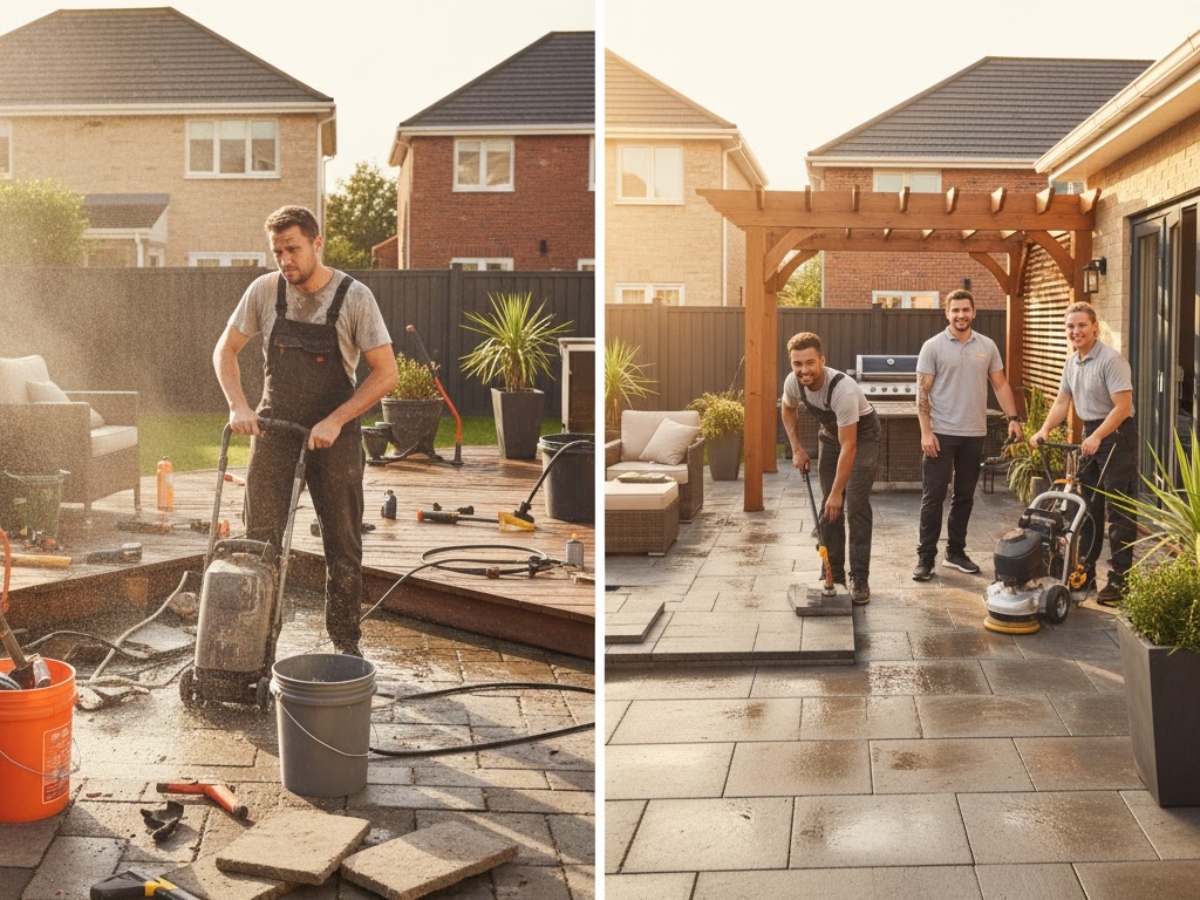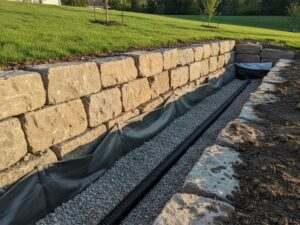Years of sun, rain, and heavy use can leave patios cracked, uneven, and far from their original attraction. When that happens, homeowners often face a familiar dilemma: restore it themselves or bring in a professional. And with the flood of online tutorials and affordable materials available, the urge to DIY patio restoration is understandable. However, the job may be more difficult than it seems due to a combination of technical requirements, material expertise, and safety concerns. On the other hand, hiring a professional offers skill, efficiency, and lasting results, although at a higher cost. That’s the reason we are going to discuss the real differences between the two, which can help you make a wise decision that fits both your budget and your vision for a refreshed, high-quality patio.
DIY Patio Restoration Vs. Hiring a Professional
DIY Patio Restoration
Ideal for Minor Repairs and Maintenance
DIY paver patio installation or restoration works best for surface-level improvements like cleaning, sealing, or minor joint repairs. Tasks such as:
- Pressure washing to remove grime, algae, and stains.
- Re-grouting or re-sanding joints between pavers.
- Applying sealant coatings to protect against moisture and UV exposure.
These can be performed with basic tools and some online patio repair tips or guides.
Technical Challenges to Consider
More advanced repairs, like leveling uneven pavers, filling structural cracks, or resurfacing concrete, require technical know-how. Mistakes in these processes can lead to long-term issues:
- Incorrect base compaction may cause settling or water pooling.
- Poor slope management can result in drainage failure.
- Wrong sealant or mortar selection may lead to cracking, efflorescence, or discoloration.
For DIY enthusiasts, following basic paver patio installation tips can help prevent common mistakes and improve long-term stability.
Tool Requirements
Many DIYers underestimate the need for specialized tools like:
- Diamond grinders for resurfacing.
- Wet saws for cutting stone.
- Rotary scrubbers for deep cleaning.
Without these, achieving an even, durable finish can be difficult.
Hiring a Professional
Comprehensive Assessment and Precision Work
A professional patio contractor provides a full evaluation before beginning any repair. This includes:
- Checking base stability and subgrade compaction.
- Assessing drainage and slope accuracy.
- Identifying material-specific wear or structural damage.
Depending on the findings, they may recommend grout injection, polymeric joint re-sanding, surface re-leveling, or protective coating applications.
Access to Industrial-Grade Materials and Techniques
Professionals use commercial-grade products designed for long-term performance:
- Sealers resistant to UV, moisture, and freeze-thaw cycles.
- Anti-slip surface coatings for safety.
- Advanced machinery for cutting, grinding, and cleaning.
These patio restoration techniques not only ensure better results but also extend the patio’s lifespan and reduce maintenance frequency.
Factors to Consider When Hiring a Patio Restoration Expert
Proven Experience and Material Specialization
A qualified restorer should demonstrate extensive experience across multiple patio materials, including concrete, pavers, natural stone, and decorative finishes. Each surface demands a unique restoration process: concrete may require grinding, resurfacing, and re-leveling, while pavers often involve base stabilization and polymeric re-sanding. Professionals with a proven track record understand substrate behavior under varying moisture and temperature conditions, thereby preventing issues such as spalling, heaving, or efflorescence.
Ask for project portfolios, technical references, and client testimonials to assess performance consistency. True patio restoration experts can explain why they choose certain sealers, fillers, or adhesives for specific materials and site conditions, demonstrating mastery rather than general contracting knowledge.
Technical Methodology and Equipment Standards
A reliable expert uses industrial-grade tools and restoration systems tailored to the job. For example:
- High-pressure rotary surface cleaners for uniform deep cleaning.
- Dust-controlled diamond grinders for resurfacing and crack edge profiling.
- Moisture meters and slope analyzers to detect hidden drainage flaws.
Additionally, professional patio installation contractors should specify product chemistry, such as silane-siloxane penetrating sealers for porous concrete, urethane topcoats for decorative surfaces, or epoxy-polymer crack fillers for structural repair. Their ability to justify product selection shows technical comprehension rather than trial-and-error workmanship.
Diagnostic Inspection and Restoration Workflow
A professional patio contractor conducts a comprehensive pre-restoration assessment before providing a quote. It comprises an outline of a step-by-step restoration plan, the cleaning method, repair sequence, sealant type, and curing timeline, paired with clear maintenance recommendations. Lack of such documentation often indicates inexperience or a one-size-fits-all approach.
Quality Assurance, Warranties, and Performance Proof
Professionals confident in their work provide written warranties covering both materials and labor. They also perform post-restoration quality checks, including adhesion testing, surface tension evaluation, and visual uniformity inspection. Checking verified reviews on platforms like Google or Yelp, along with direct client references, helps validate reliability and workmanship standards.
Transparency in Cost and Deliverables
Comprehensive paver patio installation quotes should break down material specifications, surface preparation, application processes, and warranty coverage. Be cautious of unusually low bids that skip essential steps like deep cleaning, joint stabilization, or proper curing time. A technically sound contractor justifies every cost with measurable performance metrics, including longevity, slip resistance, and water repellence, not vague promises.
Conclusion
While DIY patio restoration can save on labor costs, errors in foundation repair, drainage slope, or material treatment can lead to expensive rework later. Professional restoration, though costlier upfront, offers lasting results, structural reliability, and aesthetic precision, making it a more valuable long-term investment. Hence, partnering with experienced professionals is the safest choice, and in the Western Chicago suburbs, we at My Landscape Contractor should be your preferred service provider. We combine diagnostic precision, material science knowledge, and code-compliant restoration techniques to restore your patio’s structure, safety, and finish.




